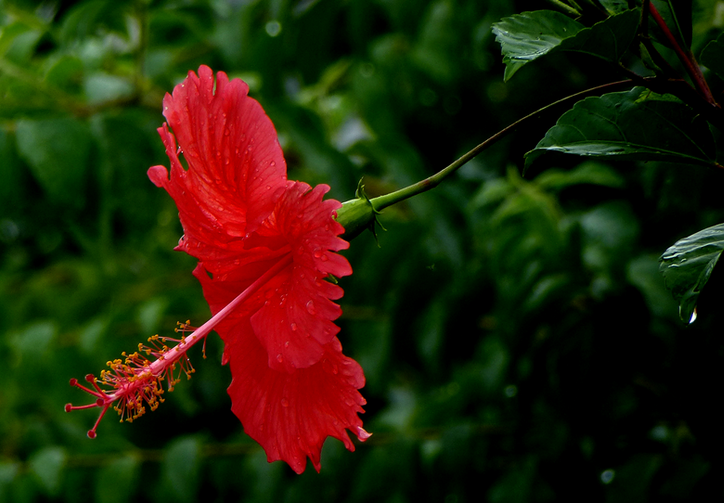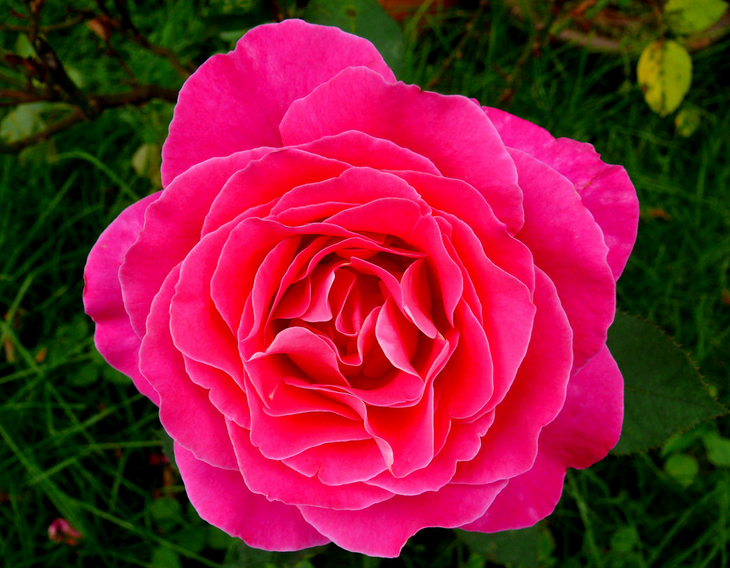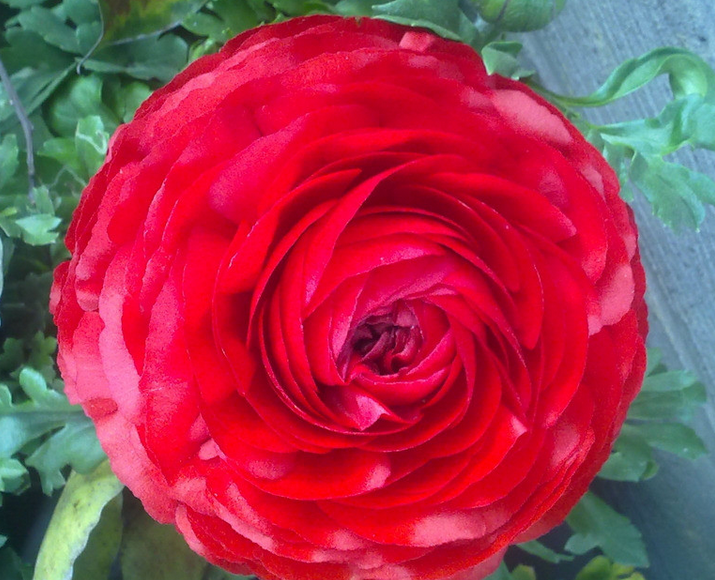An Analysis of the Culture methods of Mulberry Leaf Peony to teach you to cultivate Mulberry Leaf Peony easily
Mulberry leaf peony is a famous flower in China, with large flowers and many colors, although it is ridiculed in the morning, but it is continuous, with a long flowering period and the most prosperous summer and autumn flowers, which is deeply loved by people. many people want to raise mulberry leaf peonies themselves, but they do not know how to raise them. Next, let's learn more about it with the editor of the decoration network.

An Analysis of the Culture methods of Mulberry Leaf Peony to teach you to cultivate Mulberry Leaf Peony easily
Culture methods of Mulberry Leaf Peony
1. Because mulberry leaf peony is a positive flower, it should be placed in the place where the sunshine is long, so that it can be fully exposed to sunlight in summer, and the lack of light can easily make the flower bud fall, the flower becomes smaller and the flower color is dim.
2. Too dry and wet will affect flowering. In the summer blooming season, depending on the air temperature and the dry and wet condition of the basin soil, water can be watered once or twice a day, but dry and thoroughly irrigated to prevent rotting roots due to high temperature and stagnant water. Watering is better before 9: 00 a. M. or after 5: 00 p. M. to minimize the temperature difference between air temperature and water temperature. At noon, water can be sprayed on the leaf surface and around the flowerpot to reduce the leaf temperature and maintain air humidity. The flowers of Fusang are very tender and cannot be sprayed directly to the flowers, otherwise they can easily cause burns.
3. Change the basin every year, use rotten bean cake and poultry dung as base fertilizer, and then apply well-absorbed and effective compound fertilizer. 0% potassium dihydrogen phosphate can be sprayed to the leaves every 7-10 days to make the leaves green and breed more buds.
4. Fusang is not resistant to cold, so whether it can survive the winter safely is the key. The winter temperature should be kept at 12-15 ℃, and it is easy to freeze to death if it is lower than 5 ℃. However, it should be noted that the temperature should not exceed 20 ℃. Too high temperature will cause branches and leaves to grow, affect dormancy, and blossom in the coming year. The basin soil should maintain 30% relative humidity in winter and should not be watered in large quantities. It is generally not necessary to apply fertilizer in winter, and only a small amount of liquid fertilizer is needed.
5. Pruning should be carried out in spring, leaving stout branches to ensure the concentration of nutrients and the blooming of flowers.
Propagation methods of Mulberry Leaf Peony
1. Mulberry leaf peony cutting
Cutting is the most commonly used method of mulberry leaf peony propagation, which can be cut at any time from early spring to late autumn, with the highest survival rate in the rainy season and can only be carried out in the greenhouse in winter. The best cuttings are one-and-a-half Lignification, about 10 cm long, cut off the lower leaves, leave the top leaves, cut flat, insert in the sand bed, spray water every day to maintain high air humidity. It takes root three weeks after insertion and can be put on the pot after 45 days of growth. Generally speaking, the mulberry leaf peony cut in that year can blossom in the second year.
2. High pressure propagation of mulberry leaf peony.
It is mainly aimed at the woody branches, which are more commonly used in woody plant species. Mulberry leaf peony can also give it a try. It is safer than cutting high-pressure propagation, at least it will not die. Haha, the following is a high-pressure sample diagram. The picture is not mulberry leaf peony.
3. Striping propagation
This is also very simple, that is, press the branches of mulberry leaf peony in the soil, let them take root, and cut off after taking root, the principle is similar to high pressure, but there are slight differences according to the actual situation. These three methods are very simple and operable. Flower friends can give it a try.
Analysis of Culture methods of Mulberry Leaf Peony
Mulberry leaf peony is a famous flower in China, with large flowers and many colors. Although it is ridiculed in the morning, it goes on and on, with a long flowering period and the most blooming summer and autumn flowers. Many people want to raise mulberry leaf peonies on their own. The following is to learn more about the cultivation methods of mulberry leaf peony with the editor of the decoration network.
Analysis of Culture methods of Mulberry Leaf Peony
Culture methods of Mulberry Leaf Peony
1. Because mulberry leaf peony is a positive flower, it should be placed in the place where the sunshine is long, so that it can be fully exposed to sunlight in summer, and the lack of light can easily make the flower bud fall, the flower becomes smaller and the flower color is dim.
2. Too dry and wet will affect flowering. In the summer blooming season, depending on the air temperature and the dry and wet condition of the basin soil, water can be watered once or twice a day, but dry and thoroughly irrigated to prevent rotting roots due to high temperature and stagnant water. Watering is better before 9: 00 a. M. or after 5: 00 p. M. to minimize the temperature difference between air temperature and water temperature. At noon, water can be sprayed on the leaf surface and around the flowerpot to reduce the leaf temperature and maintain air humidity. The flowers of Fusang are very tender and cannot be sprayed directly to the flowers, otherwise they can easily cause burns.
3. Change the basin every year, use rotten bean cake and poultry dung as base fertilizer, and then apply well-absorbed and effective compound fertilizer. 0% potassium dihydrogen phosphate can be sprayed to the leaves every 7-10 days to make the leaves green and breed more buds.
4. Fusang is not resistant to cold, so whether it can survive the winter safely is the key. The winter temperature should be kept at 12-15 ℃, and it is easy to freeze to death if it is lower than 5 ℃. However, it should be noted that the temperature should not exceed 20 ℃. Too high temperature will cause branches and leaves to grow, affect dormancy, and blossom in the coming year. The basin soil should maintain 30% relative humidity in winter and should not be watered in large quantities. It is generally not necessary to apply fertilizer in winter, and only a small amount of liquid fertilizer is needed.
5. Pruning should be carried out in spring, leaving stout branches to ensure the concentration of nutrients and the blooming of flowers.
Propagation methods of Mulberry Leaf Peony
1. Mulberry leaf peony cutting
Cutting is the most commonly used method of mulberry leaf peony propagation, which can be cut at any time from early spring to late autumn, with the highest survival rate in the rainy season and can only be carried out in the greenhouse in winter. The best cuttings are one-and-a-half Lignification, about 10 cm long, cut off the lower leaves, leave the top leaves, cut flat, insert in the sand bed, spray water every day to maintain high air humidity. It takes root three weeks after insertion and can be put on the pot after 45 days of growth. Generally speaking, the mulberry leaf peony cut in that year can blossom in the second year.
2. High pressure propagation of mulberry leaf peony.
It is mainly aimed at the woody branches, which are more commonly used in woody plant species. Mulberry leaf peony can also give it a try. It is safer than cutting high-pressure propagation, at least it will not die. Haha, the following is a high-pressure sample diagram. The picture is not mulberry leaf peony.
3. Striping propagation
This is also very simple, that is, press the branches of mulberry leaf peony in the soil, let them take root, and cut off after taking root, the principle is similar to high pressure, but there are slight differences according to the actual situation. These three methods are very simple and operable. Flower friends can give it a try.
How to raise mulberry leaf peony, the breeding methods and matters needing attention of mulberry leaf peony
Mulberry leaf peony, that is, mulberry flower, is a famous flower in China, with large flowers and many colors. Although the flowers are blooming and falling, the flowering period is long, and the summer and autumn flowers are the most blooming. Cutting in the same year, it can blossom in the next year, coupled with simple management, it has become an important indoor flower. It is almost different from most flower planting in that its cutting methods are different. Let's introduce how to raise mulberry leaf peonies, mulberry leaf peony culture methods and matters needing attention.
I. growth environment
Mulberry leaf peony is a strong positive plant, which likes to be warm and moist, and requires sufficient sunlight, no shade tolerance, cold and drought tolerance. In the Yangtze River valley and the north area, it can only be potted and keep 12C~15C temperature in greenhouse or other protected areas to survive the winter. The room temperature is 5C lower. The leaves turn yellow and fall off, which is lower than 0C, that is, they suffer frost injury. Resistant to pruning and strong branching. It can adapt to a wide range of soil, but the slightly acidic loam rich in organic matter and PH6.5~PH7 grows best.
Second, how to raise mulberry leaf peony, the breeding methods and matters needing attention of mulberry leaf peony.
1. Because mulberry leaf peony is a positive flower, it should be placed in the place where the sunshine is long, so that it can be fully exposed to sunlight in summer, and the lack of light can easily make the flower bud fall, the flower becomes smaller and the flower color is dim. 2. Too dry and wet will affect flowering. In the summer blooming season, depending on the air temperature and the dry and wet condition of the basin soil, water can be watered once or twice a day, but dry and thoroughly irrigated to prevent rotting roots due to high temperature and stagnant water. Watering is better before 9: 00 a. M. or after 5: 00 p. M. to minimize the temperature difference between air temperature and water temperature. At noon, water can be sprayed on the leaf surface and around the flowerpot to reduce the leaf temperature and maintain air humidity. The flowers of Fusang are very tender and cannot be sprayed directly to the flowers, otherwise they can easily cause burns. 3. Change the basin every year, use rotten bean cake and poultry dung as base fertilizer, and then apply well-absorbed and effective compound fertilizer. 0% potassium dihydrogen phosphate can be sprayed to the leaves every 7-10 days to make the leaves green and breed more buds. 4. Fusang is not resistant to cold, so whether it can survive the winter safely is the key. The winter temperature should be kept at 12-15 ℃, and it is easy to freeze to death if it is lower than 5 ℃. However, it should be noted that the temperature should not exceed 20 ℃. Too high temperature will cause branches and leaves to grow, affect dormancy, and blossom in the coming year. The basin soil should maintain 30% relative humidity in winter and should not be watered in large quantities. It is generally not necessary to apply fertilizer in winter, and only a small amount of liquid fertilizer is needed. 5. Pruning should be carried out in spring, leaving stout branches to ensure the concentration of nutrients and the blooming of flowers.
3. Mulberry leaf peony cuttage
Cutting is the most commonly used method of mulberry leaf peony propagation, which can be cut at any time from early spring to late autumn, with the highest survival rate in the rainy season and can only be carried out in the greenhouse in winter. The best cuttings are one-and-a-half Lignification, about 10 cm long, cut off the lower leaves, leave the top leaves, cut flat, insert in the sand bed, spray water every day to maintain high air humidity. It takes root three weeks after insertion and can be put on the pot after 45 days of growth. Generally speaking, the mulberry leaf peony cut in that year can blossom in the second year.
1. High pressure propagation of mulberry leaf peony.
It is mainly aimed at the woody branches, which are more commonly used in woody plant species. Mulberry leaf peony can also give it a try. It is safer than cutting high-pressure propagation, at least it will not die. Haha, the following is a high-pressure sample diagram. The picture is not mulberry leaf peony.
2. Striping propagation
This is also very simple, that is, press the branches of mulberry leaf peony in the soil, let them take root, and cut off after taking root, the principle is similar to high pressure, but there are slight differences according to the actual situation. These three methods are very simple and operable. Flower friends can give it a try.
Editor's affectionate hint: in the north, when opening the window in winter, we must pay attention to the flowerpot of mulberry peony far away from the window, otherwise mulberry leaf peony is very easy to freeze and die. How to raise mulberry leaf peony? do you understand the breeding methods and matters needing attention of mulberry leaf peony? I hope my introduction will help you.
- Prev

The culture method of rose flowers embellishes a colorful life.
Rose Rong beautiful, diverse, often blooming at 04:00, deeply loved by people, known as the queen of flowers, many people want to raise their own rose. So what should be done when raising rose flowers? Are there any methods and precautions?
- Next

Analysis of Culture methods and matters needing attention of celery Leaf Peony
Celery leaf peony gets its name because its leaves are more like celery. Many people want to raise celery leaf peony, but they don't know how to do it. So what should be done when raising celery leaves and peonies? Are there any methods and precautions? Next, let's learn more about it with the editor of the decoration network.
Related
- Fuxing push coffee new agricultural production and marketing class: lack of small-scale processing plants
- Jujube rice field leisure farm deep ploughing Yilan for five years to create a space for organic food and play
- Nongyu Farm-A trial of organic papaya for brave women with advanced technology
- Four points for attention in the prevention and control of diseases and insect pests of edible fungi
- How to add nutrient solution to Edible Fungi
- Is there any good way to control edible fungus mites?
- Open Inoculation Technology of Edible Fungi
- Is there any clever way to use fertilizer for edible fungus in winter?
- What agents are used to kill the pathogens of edible fungi in the mushroom shed?
- Rapid drying of Edible Fungi

